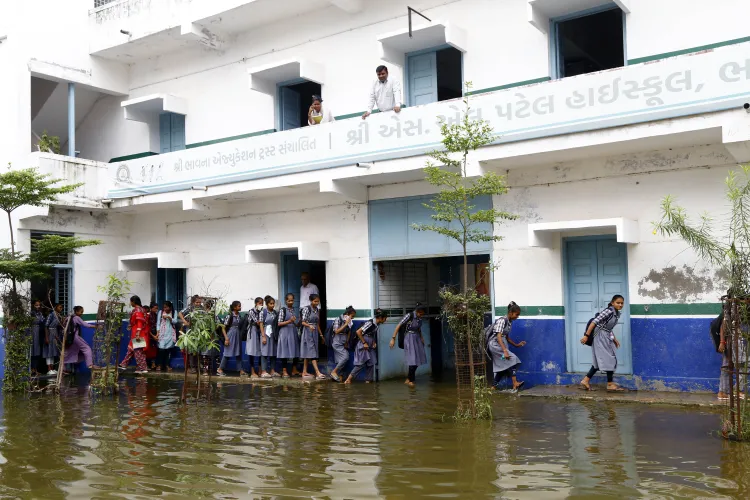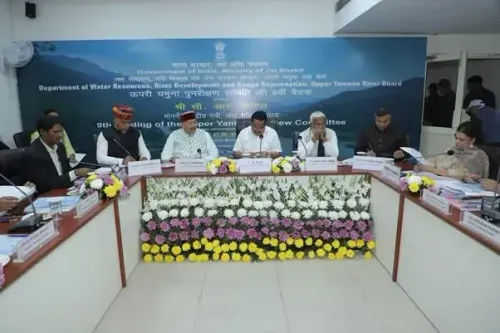Is the Monsoon Reviving in Gujarat? 217 Talukas Report Rainfall!

Synopsis
Key Takeaways
- Gujarat recorded significant rainfall in 217 talukas.
- Bhesan received the highest rainfall at 6.30 inches.
- Rainfall has improved water storage in dams to over 70 percent.
- The monsoon revival positively impacts the Kharif crop season.
- Water scarcity concerns have eased with this rainfall.
Ahmedabad, Aug 17 (NationPress) Following a brief pause in early August, the monsoon has made a robust return to Gujarat, with 217 talukas experiencing rainfall within a 24-hour timeframe.
Among these, 75 talukas recorded rainfall of one inch or more. Bhesan in Junagadh district saw the highest rainfall at 6.30 inches, while Jamkandorna followed closely with 4.65 inches. Gondal and Kunkavav Vadia each received 4.13 inches, and Dantiwada and Nandod recorded 3.58 inches and 3.07 inches, respectively.
Significant rainfall was also noted in Dhari (2.99 inches), Halvad (2.76 inches), Hansot and Karjan (both 2.40 inches), Khambhalia (2.32 inches), Ranpur (2.24 inches), Kheda (2.20 inches), Visavdar (2.17 inches), Patan-Veraval (2.13 inches), Una (2.09 inches), Kodinar and Jamjodhpur (both 2.05 inches), and Limdi (2.01 inches).
In addition, rainfall ranging from 1.5 to 2 inches was reported in various regions, including Bagasara, Ahmedabad city, Anand, Deesa, Maliya Hatina, Gir Gadhada, Bhabhar, Gandevi, Lalpur, Unjha, Amirgadh, Chuda, Umargam, Saraswati, Jetpur, Valsad, and Garudeshwar.
Talukas that saw between 1 and 1.5 inches of rain included Junagadh city, Valia, Sutrapada, Vanthali, Morbi, Savarkundla, Dahod, Matar, Dhoraji, Kankrej, Botad, Modasa, Shihor, Palanpur, Wankaner, Talala, Upleta, Kotda Sangani, Jambughoda, Lathi, and Sami, among others.
As of August 17, Gujarat has recorded 67.77 percent of its 10-year average seasonal rainfall, signaling a strong revival of the monsoon after a brief hiatus in the first half of August.
The recent rains have markedly improved the water levels in Gujarat’s dams and reservoirs, with overall storage now exceeding 70 percent of total capacity, compared to less than 50 percent in early August.
Key reservoirs such as Sardar Sarovar on the Narmada, Ukai in Tapi, and Kadana on the Mahi have reported significant inflows, while medium and minor dams across Saurashtra, North Gujarat, and South Gujarat have also seen substantial replenishment.
This extensive rainfall has alleviated prior concerns regarding water scarcity, ensuring enhanced availability for drinking water, irrigation, and power generation, while also bolstering prospects for the current Kharif crop season.









